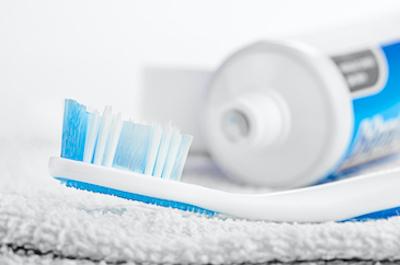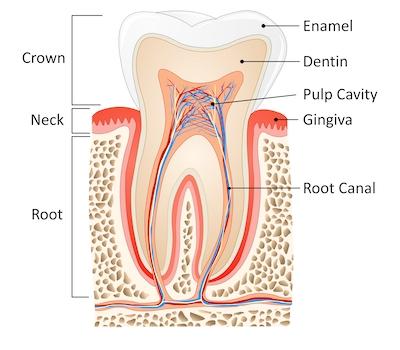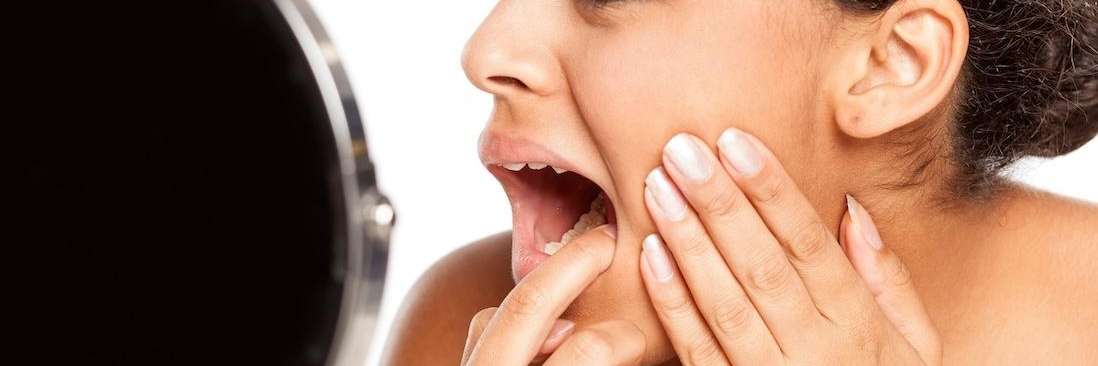
Enamel erosion is a severe oral health condition that leaves your teeth vulnerable to decay, loss, and more. Fortunately, your dentist in Tuscaloosa, AL, can help you halt this erosion and provide treatments to protect your teeth from future damage.
Let’s explore enamel erosion, its causes and stages, and what you can do to protect your smile.
What Is Tooth Enamel?
Enamel is the outermost layer of your teeth, a thin but durable jacket that protects its inner workings. Without this protective layer, the tooth would appear discolored and weak. It would also be at risk for loss due to fractures, advanced decay, or crumbling.
Fortunately, dental enamel is durable and meant to withstand the extreme forces of chewing. However, caring for this protective outer layer is essential to ensure a lifetime of healthy teeth.
10 Common Causes of Enamel Erosion
Once you identify the causes of tooth enamel erosion, it’s much easier to think about prevention or changing the lifestyle habits contributing to tooth enamel loss.
Let’s explore a few common causes of tooth enamel loss.
#1 Sugary and Acidic Foods and Drinks
This may be the most common cause of tooth enamel loss. Allowing sugary and acidic foods and drinks to remain on the teeth for prolonged periods causes enamel to erode, putting oral health at risk.
Rather than drinking soda or fruit juice, try consuming more water, which keeps the mouth hydrated and reduces acidity. Also, substitute cakes and candies for crunchy veggies.
 #2 Poor Oral Hygiene
#2 Poor Oral Hygiene
Ideally, you should brush and floss your teeth after every meal and always before bed. If you’re unable to do so, aim for twice daily on the brushing and at least once on the flossing.
Failure to remove debris from the teeth leads to enamel erosion over time.
#3 Acid Reflux or GERD
Acid reflux means that stomach acid does not remain in the stomach. Some of this acid refluxes into the throat and mouth, where it can eat away at your dental enamel over time. If you notice acid reflux, it’s important to discuss treatment options with your doctor to avoid complications. Acid reflux is especially damaging to your back teeth.
#4 Bite Misalignment
Bite misalignment puts stress and wear on specific teeth, which are taxed by most chewing and gnashing food. Your dentist in Tuscaloosa may talk to you about orthodontics to help save your teeth and enamel from future loss and stress.
#5 Dry Mouth
Everyone occasionally experiences dry mouth, but when it becomes chronic, dental enamel is at serious risk. A dry mouth allows debris to sit on teeth, forming plaque and tartar. When this happens, enamel begins to erode due to the resulting acids.
Be sure to drink plenty of water to keep your mouth hydrated. You can also try sugarless gum. If dry mouth persists, talk to our dental team. Chronic dry mouth can occur if you have salivary gland issues, including salivary stones. Smoking and tobacco use may also contribute to poor saliva production.
#6 Medication Use
Prescription and over-the-counter medications can lead to dry mouth. Common culprits include aspirin and allergy medicines. If medication leads to dry mouth for you, talk to your physician.
#7 Genetic Factors
Some patients are predisposed to thinner dental enamel due to genetics. If you have a family history of thinner dental enamel or hypoplasia, discussing it with your dentist and hygienist is essential.
#8 Untreated Bruxism
Bruxism is the habit of grinding and clenching your teeth during sleep. Over time, this can cause enamel erosion, tooth wear, Jaw joint issues, increased musculature at the jaw joints, and pain.
If you suspect bruxism, you must talk to your dentist or physician. Without treatment, you face tooth loss and a whole host of complications.
#9 As Part of Aging
We use our teeth to eat many meals over a lifetime. Eventually, this wear and tear can mean enamel erosion. No matter your age, be sure to see your dentist regularly for periodontal assessments and tooth checks.
#10 Lack of Dental Care
Visiting your dentist every six months is crucial for checkups and teeth cleanings in Tuscaloosa.
Checkups allow the dentist to assess your tooth health regularly. If enamel appears weak or compromised, your dentist can discuss fluoride treatments to help remineralize your enamel for stronger and healthier teeth.
Teeth cleanings rid your teeth of the ingredients that lead to enamel erosion. It’s important to remember that enamel loss does not happen suddenly. By seeing your dentist and hygienist regularly, we can take measures to ensure your teeth remain healthy.
Regular dental care should always complement excellent oral hygiene.
Enamel Erosion Stages
Losing some enamel over your lifetime is natural, but this should keep pace with your age. Below are the typical stages of enamel erosion and what you can expect.
Stage 1: Enamel Mineral Loss
Enamel breaks or is compromised at this stage, which puts the tooth at risk. You may notice spots on the teeth or areas of sensitivity. You can help remineralize the tooth with fluoride—brushing, flossing, and seeing your dentist.
Stage 2: Decaying Enamel
Enamel decay means a compromised hole or entry point has formed in the enamel. You’re unlikely to see this compromise when you smile, but the tooth can subtly discolor at this stage.
Stage 3: Dentin Decay
Dentin is the layer beneath your tooth enamel. When decay reaches this level of the tooth, it’s at risk for canal penetration. You may notice increasing sensitivity and discoloration at this stage.
Stage 4: Tooth Crumbing or Pulp Infection
At this stage, you may have a severe toothache, jaw swelling, and a festering infection in the canal of your tooth. You’ll need to see your emergency dentist in Tuscaloosa as soon as possible to prevent infection spread.
Stage 5: Tooth Loss and Gum Disease
Untreated tooth decay and infections due to enamel erosion can lead to tooth loss and even gum disease.
Gum disease can cost you your teeth, but it has also been linked to severe physical health risks involving the heart and lungs.
Keeping Your Tooth Enamel Healthy for Life
- Visit your dentist every six months for checkups and teeth cleanings.
- Brush your teeth at least twice daily.
- Floss your teeth at least once daily.
- Adopt a healthy diet low in sugar and acidity.
- Adopt a healthy diet high in calcium and nutrients.
- Talk to your dentist if you suspect bruxism.
- Talk to your doctor or dentist if your dry mouth persists.
- Consider giving up tobacco in all forms.
- Consider orthodontics for bite alignment.
- Talk to your dentist if you notice sensitive teeth or oral changes.
Preventive Dentistry in Tuscaloosa
If you have not been to the dentist in a while or it’s time for your next checkup and teeth cleaning, contact us today to reestablish dental care with our team.

